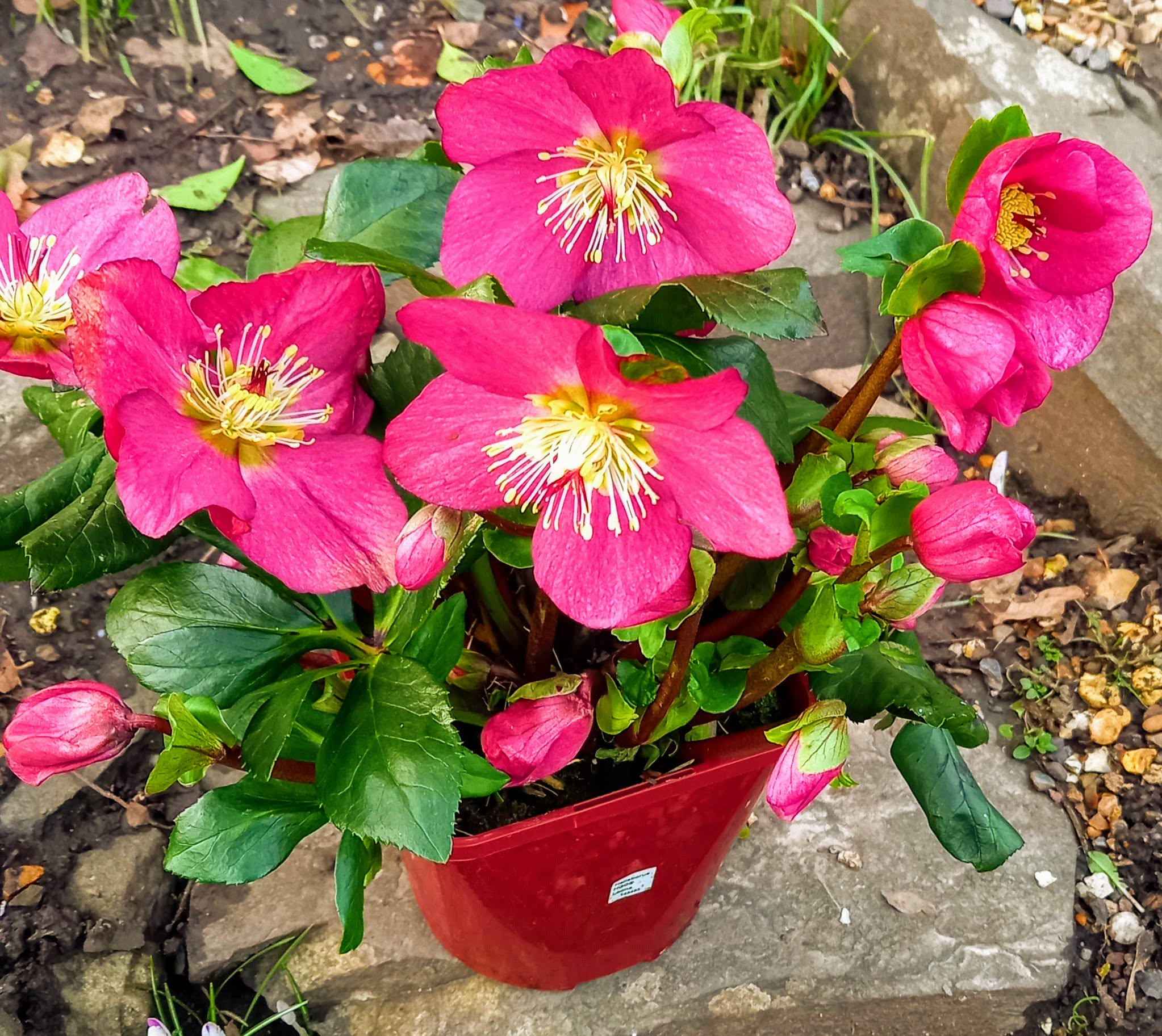
M
AGICAL, mystical and magnificent. It’s a triple title for perhaps the loveliest wonder plant of winter – the hellebore.
They are anything but helluva boring! Indeed, during a recent stroll around a local garden centre I was rooted to the spot for a moment when I came face-to-blooms with a dozen or so potted beauties in the most bewitching burgundy red imaginable.
I swear I heard one of them plead: “Take me home.”
I had to have one. And so I did.
Its name – Leona, in the Winter Ballet series, with lush, shiny, evergreen foliage which complements the alluring, nodding blooms perfectly.
And the good news is that this variety doesn’t hang its head so obviously as most hellebores, so you get a real eyeful of golden stamens especially, with my plant, from a couple of heads that actually look up.


At 12in to 15in high, it’s a compact lady, unlike many other species that can soar to 2ft or 3ft.
I couldn’t help noticing a headline in Gardeners’ World presenter Carol Klein’s yellowing magazine feature from some years back. “You Can Never Have Too Many Hellebores” it read.
Agree entirely. Furthermore, it is not always necessary to shell out for new plants to increase your stock. Leave ‘em be and they’ll self-seed in their favoured semi-shaded home, promiscuously producing babies that seem to flower when the plants are still quite tiny.
As a bonus issue, you’ll never know what colours or colour combinations are in store until the petals unfold.
And, by heck, the range is almost limitless. You’ll find them in shades of purple, red, yellow, pink, white and green, as well as plenty of artistic patterning to enlighten the eyes.
Many of us became slightly familiar with hellebores – part of the huge buttercup family – years ago from admiring the Christmas rose, Helleborus niger, in pots or in our friends’ gardens.
It’s a myth that these bloom around Christmas Day, as very few do, and it’s certainly not a rose. Yet the species is certainly early to flaunt its snow-white cups, often tinged green or pink alongside dark, leathery leaves, not long after New Year’s Day.
Because the foliage stays put for months, hellebores make striking structural plants, even after the petals fade.
It’s not a bad move to cut out any unsightly foliage in late April as new leaves start to sprout.
Occasionally large leaves will obscure the spectacle, so snip these off carefully, but not too close to the crown as that could lead to rot setting in.

Hellebores: How can you resist? Top – The gorgeous Winter Ballet Leona; centre left and right – two lovely casual seedlings which emerged in my garden; above – a magnificent display of hellebores are guarded by king and queen at Merry Harriers Garden Centre in North Devon.
Listing specific varieties is quite pointless as there are so many out there, even running into thousands.
As well as inspecting a wide choice of hellebores at your local garden centre, if you fail to find the colour you crave there is no shortage of online suppliers.
Among leading stockists are Ashwood Nursery in the West Midlands who are consummate hellebore producers and even employ their own breeder to further develop the Ashwood strain.
So do love and look after your hellebores as they really are heavenly heralds of spring. But also take note of that headline I mentioned a few paragraphs into my piece.
You have been warned!